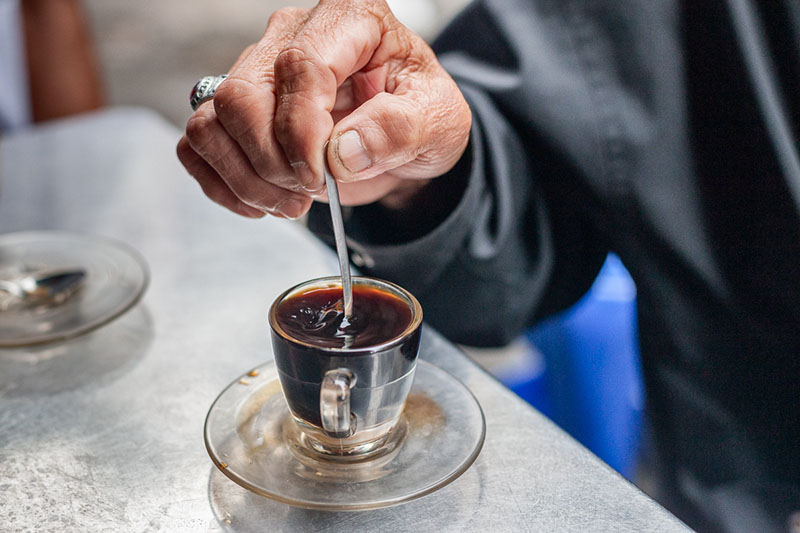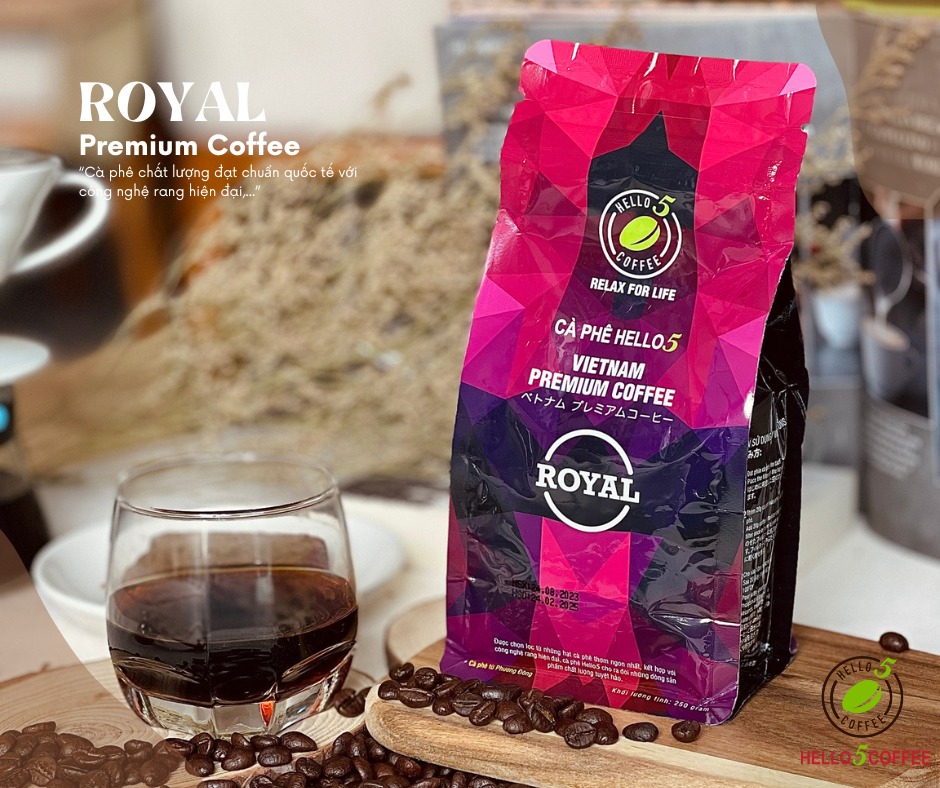Coffee provides long-term health benefits such as being associated with reduced risk of liver disease, chronic inflammation, cardiovascular disease, diabetes, and even cancer. However, to maximize the health benefits that coffee brings, many people may wonder whether dark roast or light roast is better for health.
1. Coffee Roasting Levels
Roasting is a thermal process that transforms coffee into dark brown coffee beans, highlighting aroma and flavor. When roasting, temperature changes the compounds that make up the beans. These chemical changes affect the smell, taste, and antioxidant properties of coffee. Therefore, after roasting, coffee should be used as quickly as possible before the fresh roasted flavor begins to diminish.

Most roasters give specialized names to their roasted coffee types and there is very little industry standardization. This can cause some confusion when purchasing, but generally, roasted coffee typically has four color types: light, medium, medium-dark, and dark.
- Light roast: Lighter color and lighter taste.
- Medium roast: Medium roast coffee has a medium brown color.
- Medium-dark roast: Medium-dark roast produces coffee with a dark or quite dark color.
- Dark roast: Dark roast coffee ranges from dark to very dark.
Dark roast coffee produces shiny black beans with an oily surface and a distinct bitter taste. It’s important to remember that the darker the coffee roast, the less acid in the coffee drink. In fact, which roasting method is perfect is a personal choice sometimes influenced by national preferences or geographical location.
2. Does Dark Roast Coffee Have More Caffeine Than Other Roasting Levels?
Many people mistakenly believe that dark roasted coffees are “stronger” than lighter roasted coffees and have higher caffeine content. Actually, they have the same amount of caffeine.
Caffeine has a decomposition temperature above 300°C. While coffee roasting temperatures rarely exceed 235°C. Therefore, whether coffee is roasted at super dark or super light levels, the caffeine content in coffee is almost 100% preserved.

The rich flavor and bitter taste of dark roast coffee is created by roasting, not from caffeine.
Different ratios of coffee to water or other ingredients also affect the flavor of roasted coffee. Coffee with added chocolate flavor may taste stronger than usual.
3. Which Roast is Most Beneficial for Health?
The health benefits of light roast versus dark roast depend on what you want to achieve from your cup of coffee. Let’s consider healthy factors including antioxidants, anti-inflammatory properties, and acidity in coffee.
Antioxidants and Anti-inflammatory Properties
Coffee is the main source of polyphenols in the diet, and these antioxidant compounds have anti-inflammatory effects beneficial to most people. Polyphenols in coffee such as chlorogenic acid, diterpenes, and trigonelline prevent free radicals from causing damage and subsequently causing inflammation; some even prevent the production of inflammatory compounds by inhibiting gene expression and enzymes related to their development.

According to research published in the Journal of Food Science & Nutrition, phenolic compounds present in coffee beans can create flavor and provide health benefits. This study aimed to comprehensively evaluate the impact of commercial roasting levels (light, medium, and dark) on phenolic content and antioxidant capacity of Arabica coffee beans (Coffea arabica) through antioxidant tests.
Overall, this study confirmed that phenolic compounds in coffee beans decrease when roasted thoroughly, while their antioxidant capacity may be maintained or improved. Medium roast coffee beans showed relatively better nutritional value and sensory characteristics.
Acidity in Coffee
Coffee is a naturally acidic beverage and acidity levels can vary depending on the type of coffee bean and brewing method. Acidity is not necessarily a bad thing because in fact, it’s one of the things that makes coffee taste delicious. The main reason coffee is acidic is due to the presence of caffeine and naturally occurring acids in coffee beans. These acids can form chlorogenic acid when brewed and are associated with many health benefits such as being good for weight loss and improving blood sugar control.

These acids are formed during the roasting process and they contribute to coffee’s unique flavor and aroma. Acidity levels in coffee can also vary depending on the type of bean and brewing method. For example, darker roasts tend to be more acidic than lighter roasts.
However, there are some potential health impacts of drinking acidic coffee to note:
- Stomach pain or acid reflux
- Tooth damage
- Weakened bones
- Effects on nutrient absorption
Summary Table of Some Substances in Roasting Levels
| Coffee Type | Acidity | Antioxidant Activity | Caffeine | Flavor |
| Unroasted | Yes (highest acidity) | Yes (highest) | Lower than roasted coffee | Light |
| Light roast | Yes | Yes | Slightly higher than dark roast | Light |
| Medium roast | Yes | Yes | Slightly higher than light roast |
Stronger than light roast
|
| Medium-dark roast | Yes | Yes | — | Strong, bitter |
| Dark roast | Least acidic | Yes (lowest) | Less than light roast coffee but more than green coffee | Strong, bitter |
4. How Much Coffee is Appropriate to Drink?
The stimulating effects of caffeine in coffee can cause restlessness and rapid heartbeat if too much caffeine is consumed.
According to the U.S. Food and Drug Administration, 400 milligrams of caffeine per day is generally safe. Pay attention to the dosage that feels comfortable to you and reduce it if you notice side effects, such as anxiety, rapid heart rate, stomach pain, headaches, or mood changes.
Coffee provides many health benefits to help prevent chronic diseases. There are differences in antioxidant, anti-inflammatory, and acid content between different roast types from light to dark. However, the roast style you prefer will likely depend on your taste preferences.
